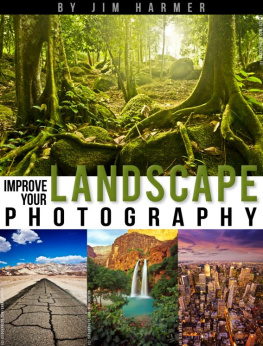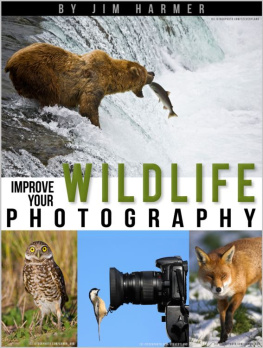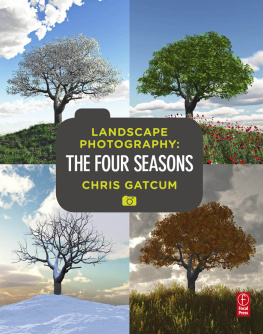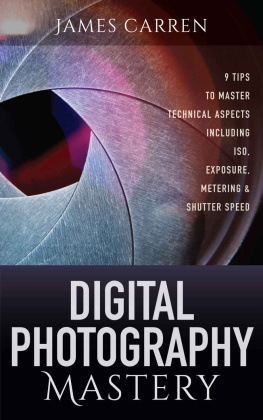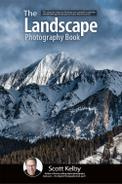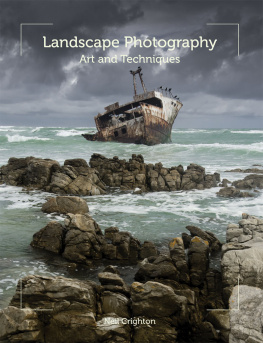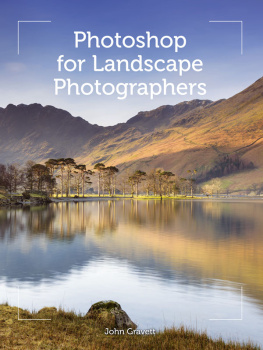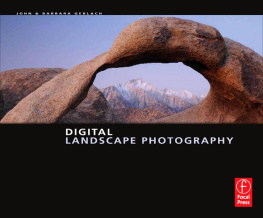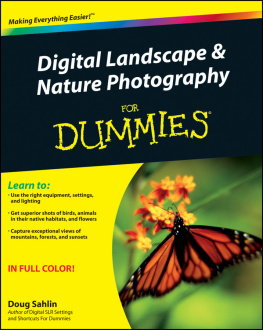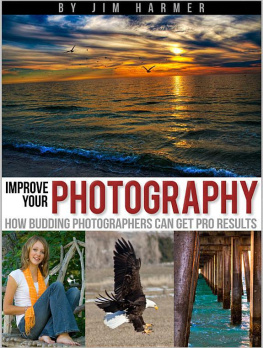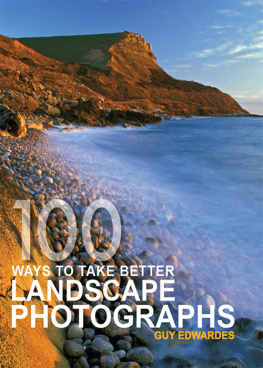IMPROVE YOUR LANDSCAPEPHOTOGRAPHY
by
Jim Harmer
SMASHWORDS EDITION
* * * * *
PUBLISHED BY:
Jim Harmer on Smashwords
Improve Your Photography
Copyright 2010 by Jim Harmer
All rights reserved. Without limiting therights under copyright reserved above, no part of this publicationmay be reproduced, stored in or introduced into a retrieval system,or transmitted, in any form, or by any means (electronic,mechanical, photocopying, recording, or otherwise) without theprior written permission of both the copyright owner and the abovepublisher of this book.
This is a work of non-fiction, but allexamples of persons contained herein are fictional. Persons,places, brands, media, and incidents are either the product of theauthor's imagination or are used fictitiously. The trademarkedand/or copyrighted status and trademark and/or copyright owners ofvarious products referenced in this work of fiction, which havebeen used without permission, is acknowledged. The publication/useof these trademarks and/or copyrights isnt authorized, associated,or sponsored by the owners.
Smashwords Edition License Notes
This eBook is licensed for your personalenjoyment only. This eBook may not be re-sold or given away toother people. If you would like to share this book with anotherperson, please purchase an additional copy for each person youshare it with. If you're reading this book and did not purchase it,or it was not purchased for your use only, then you should returnto Smashwords.com and purchase your own copy. Thank you forrespecting the author's work.
* * * * *

Chapter Zero: AuthorsIntroduction
When a photographer shoots for enough years,she will inevitably end up specializing in one type of photography.The same is true with me. When I think of photography, I think oflandscapes. Nothing can compare to the experience of waking up at4AM, driving to a location, and watching nature as the sunrisewakes up the Earth.
As you capture life at 1/100th of a second,dont forget the Creator of the beautiful landscapes yourecord.
Regards,
Jim Harmer
* * * * *
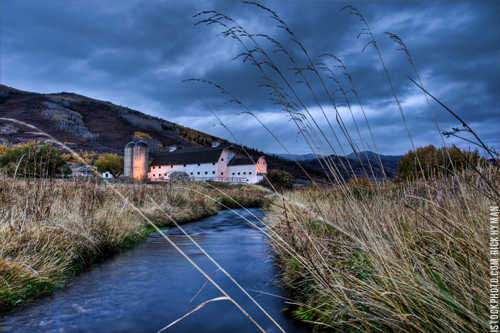
Chapter One: What YouDidnt Already Know About Composition
Composition is the placement of objects orspace within a photograph. The goal of composition in photographyis to tie together each element within the frame to create onecohesive scene. Composition is probably the second most importantelement of great photography--second only to lighting. The goodnews is that composition is not difficult to learn.
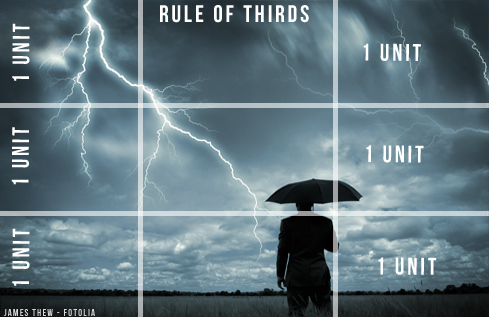
What You Already Know: The Rule of Thirds
Anyone who calls herself a photographer knowsthe rule of thirds. Picture a tic-tac-toe board on your imagerectangle. If you put the focal point of your image on one of theintersections of the lines, youll have good composition. Havingthe subject of the photo off-center creates interesting visualspace and makes the eye view the image as a whole. Next time youturn on the TV, notice how often the camera men follow the rule ofthirds. Actors or objects which are the subject of the video areoften placed on one of those intersections of third lines to createvisual interest. Simply following the rule of thirds will instantlymake your photographs better than 95% of beginningphotographers.
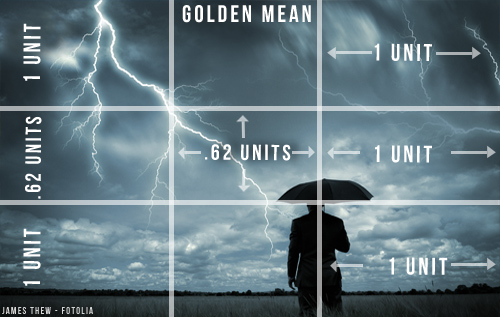
What You Didnt Know About the Rule ofThirds
Unfortunately, most photographers learn therule of thirds and never learn any advanced composition techniques.The unfortunate truth about the rule of thirds is that it is notthe rule of composition that should be followed. The rule of thirdsis merely the Cliffs Notes version of composition. The rule ofthirds is simply an easy way to explain the real rule ofcomposition that advanced photographers have used for centuries.That rule, is Fibonaccis Ratio.
Fibonaccis WHAT?!?!? Let me explain Firstof all, photographers most commonly refer to Fibonaccis ratio asthe golden mean. I only used the words Fibonaccis Ratiobecause it sounds more impressive. Either way, Fibonaccis Ratio,or the golden mean, is the best way to proportionately placeobjects within the frame of a photograph.
The golden mean is similar to the rule ofthirds, but varies the spacing between the lines. Look at the imageabove. Instead of the three horizontal and vertical sections beingperfectly equal, the first section is given 1 unit of spacing fromthe edge of the photo on both the horizontal and vertical axis. Thethird section is likewise given 1 unit of spacing from the edge ofthe photo. The middle horizontal and vertical section, however, issquished. It is only given approximately 0.62 units of spacing. Thesquishing of the middle section brings the main focal point of theimage (which is still placed on one of the line intersections)closer toward the middle.
While the golden mean may seem to be only aslight variation of the rule of thirds, the truth is that theopposite is true. The rule of thirds is only a slight variation onthe golden mean. The golden mean is nearly as old as artitself.
If this subject intrigues you and you want tounderstand it further, be prepared to read conspiracy theories,hidden mathematical formulas in world-famous paintings, and lots ofcomplex math. The information in this chapter is the need-to-knowinformation on a very complex subject to which there is no limit onthe amount of material available.
Suffice it to say in this cursory review ofthe topic that the rule of thirds is technically incorrect andbetter proportionality can be achieved in your photography if, whenyou put the viewfinder up to your eye, you picture the rule ofthirds with a squished (smaller) middle section. You can see thisfor yourself by looking at the diagrams on the two images above toillustrate the difference between the golden mean and the rule ofthirds. Notice that the placement of the man with the umbrella inthe field is more natural in the composition illustrating thegolden mean because the man is not quite so shoved over into thecorner of the image. While still off-center, he feels morenaturally placed somewhat closer to the center area of the photo.The rule of thirds composition is perfectly acceptable, but mostpeople prefer the composition following the golden mean.
Following the golden mean rather than therule of thirds will result in stronger compositions that containthe subject in the frame with better proportionality. In short, theimage will feel more balanced than if the strict rule of thirds isused. When I first learned of the golden mean some time ago, I wasskeptical at first. Then, I looked through my portfolio of myall-time best images. Sure enough! A large percentage of the imageswere closer to the golden mean than the rule of thirds. Since thattime, I have fully adopted the golden mean as my primary rule ofcomposition, and use the rule of thirds as an afterthought.

Foreground, Mid-Ground, Background
Next page
